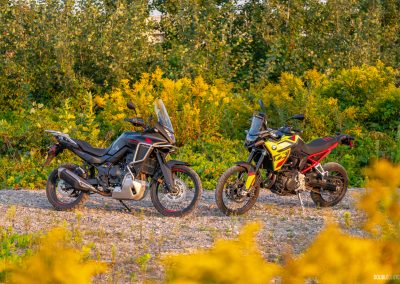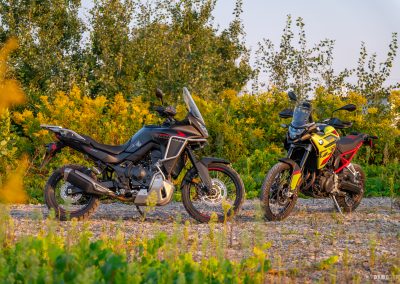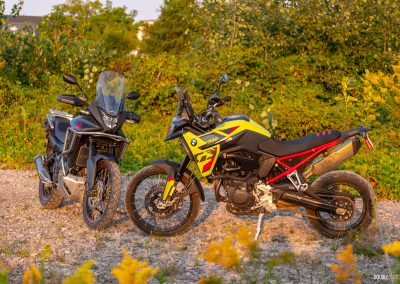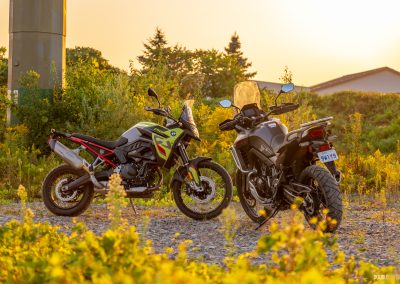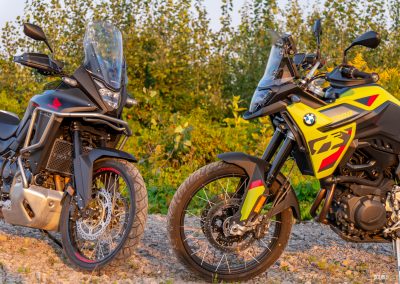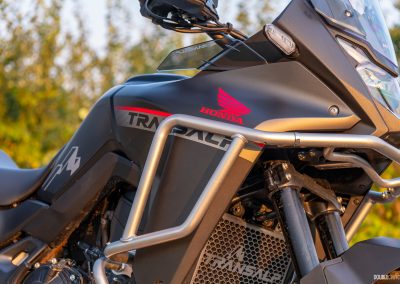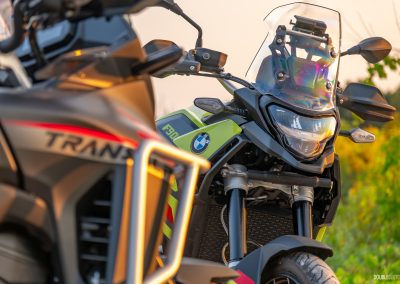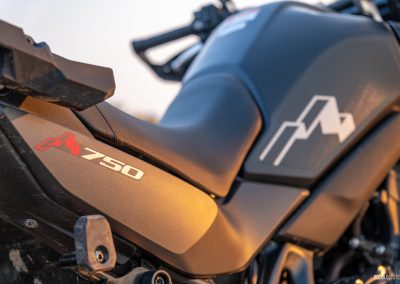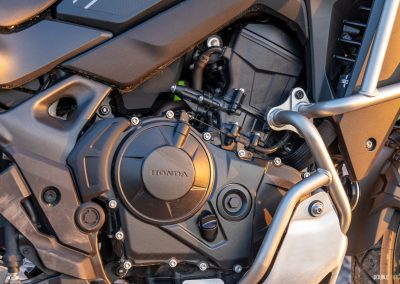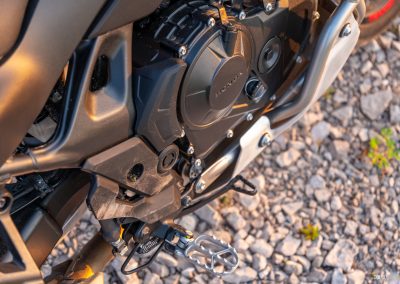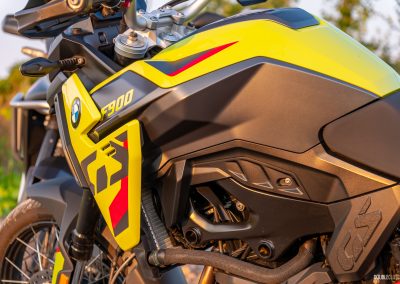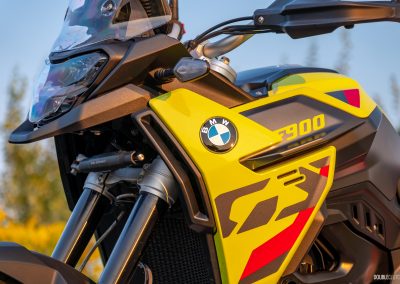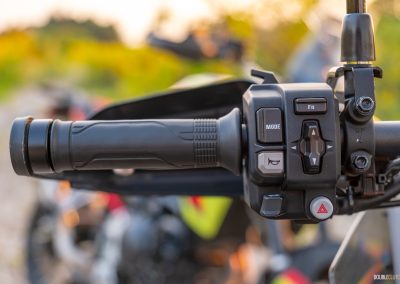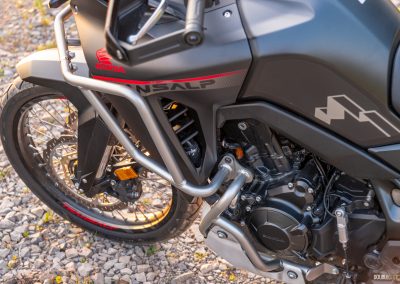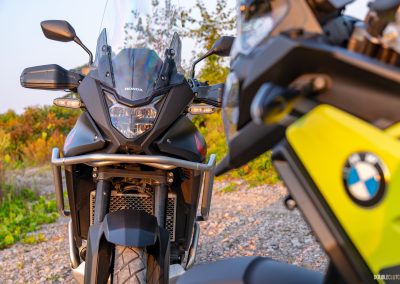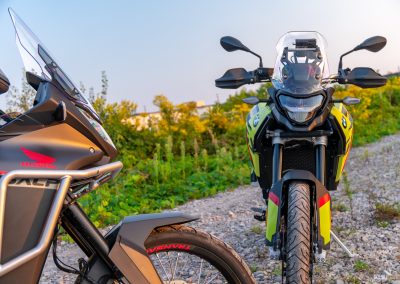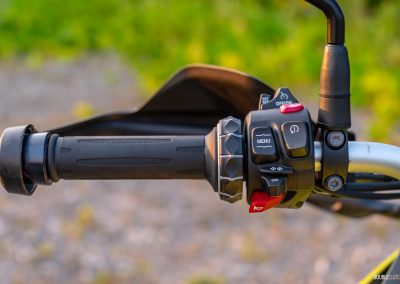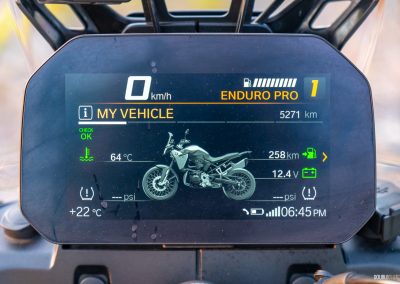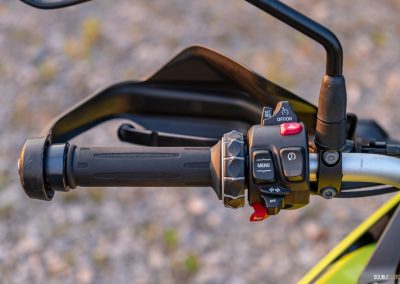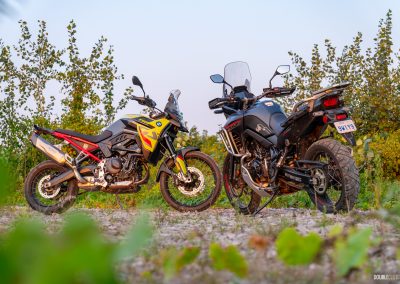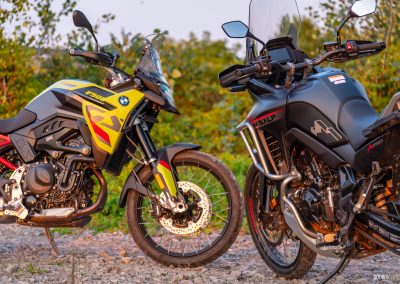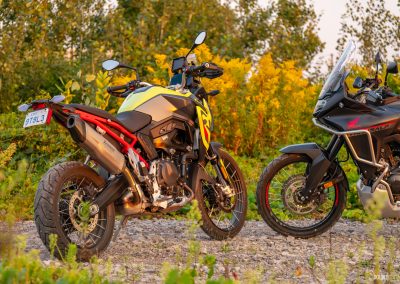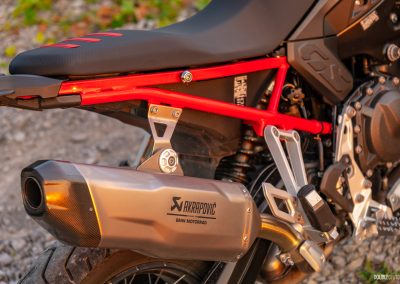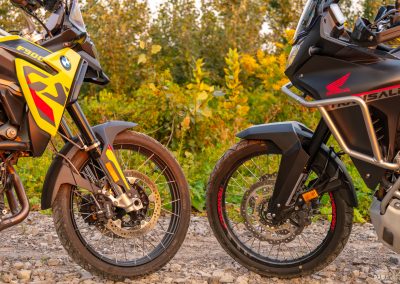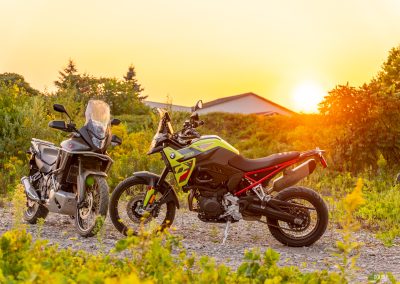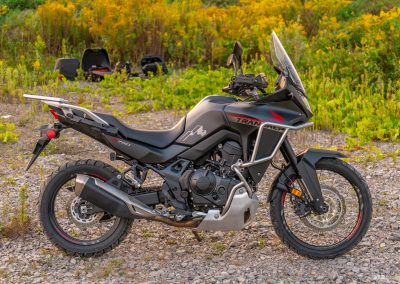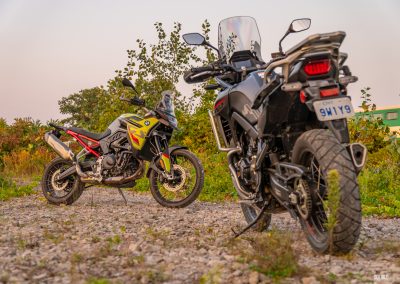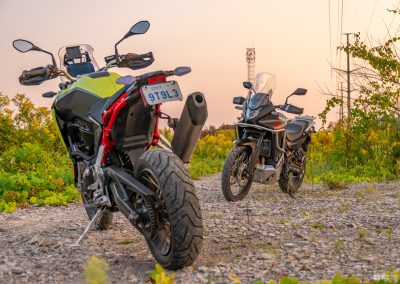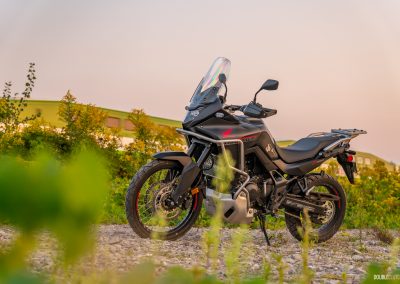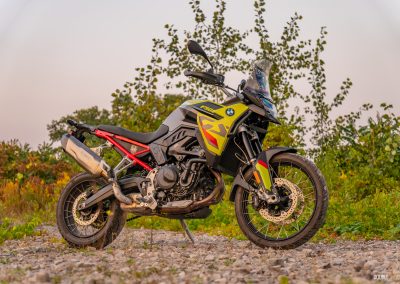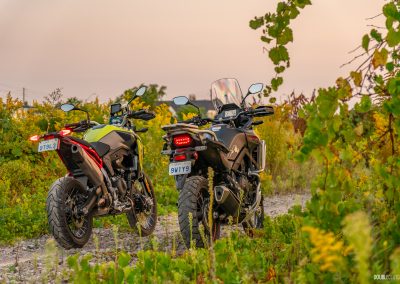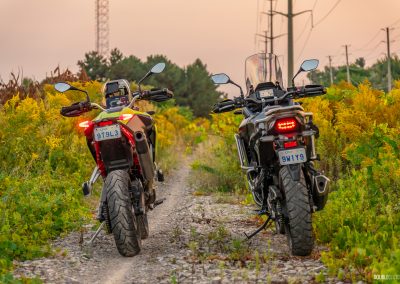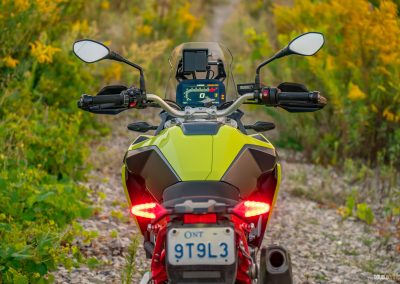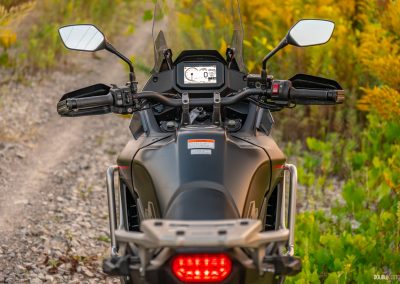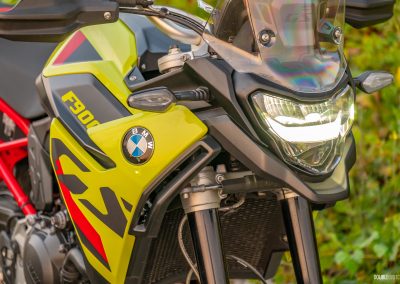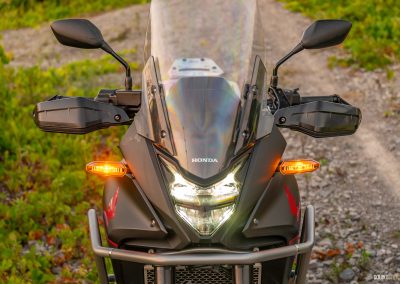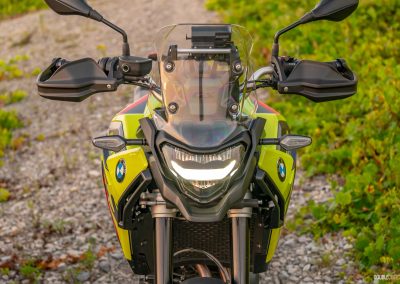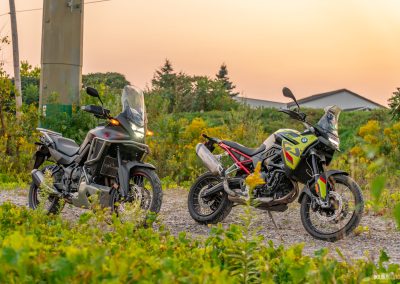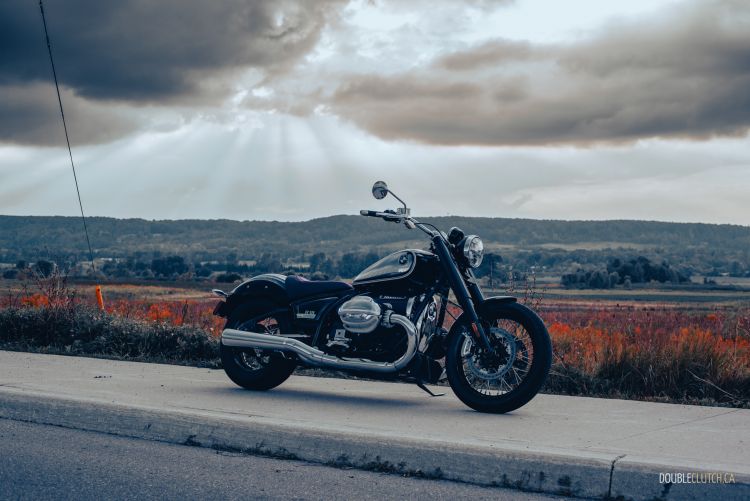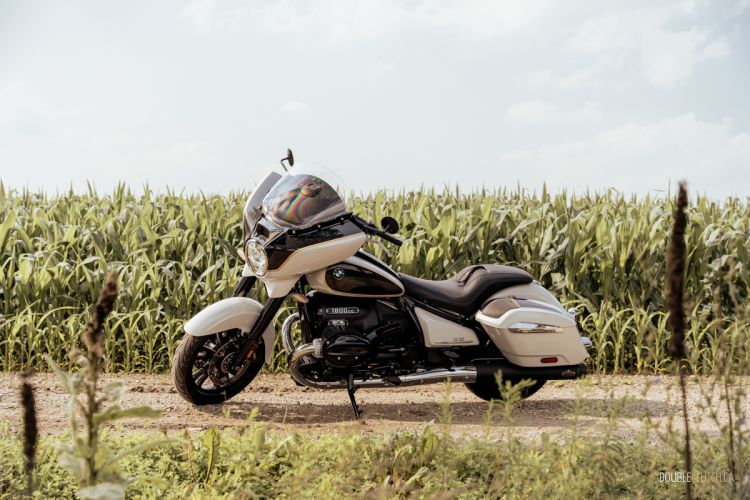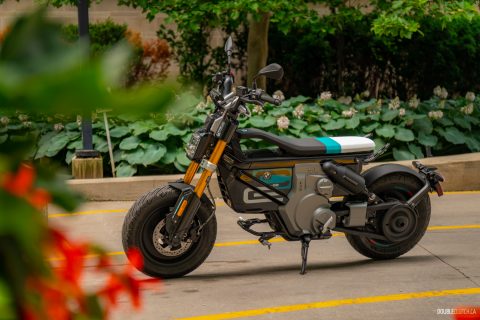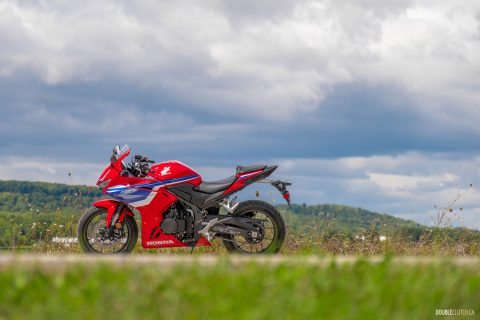Both Honda and BMW are household names that have been around for a long time. Both companies are most well-known for their cars, but both made motorcycles before getting into the car business. I don’t think it’s a coincidence that both companies’ car portfolios are and have always been known for innovative engine design and excellent driving dynamics, in no small part due to their past and ongoing connection to the world of bikes.
Both companies have rolled out new middleweight adventure bikes this year, and we’re taking a look at them side by side: the 2024 Honda XL750 Transalp and the 2024 BMW F900 GS. Adventure bikes are growing in popularity every year, much in the same way SUVs are steadily consuming the car world. It’s hard to ignore the appeal of a vehicle that can ostensibly go anywhere, do anything, and be fairly comfortable and ergonomically sound while doing it, all without giving up much in terms of outright performance.
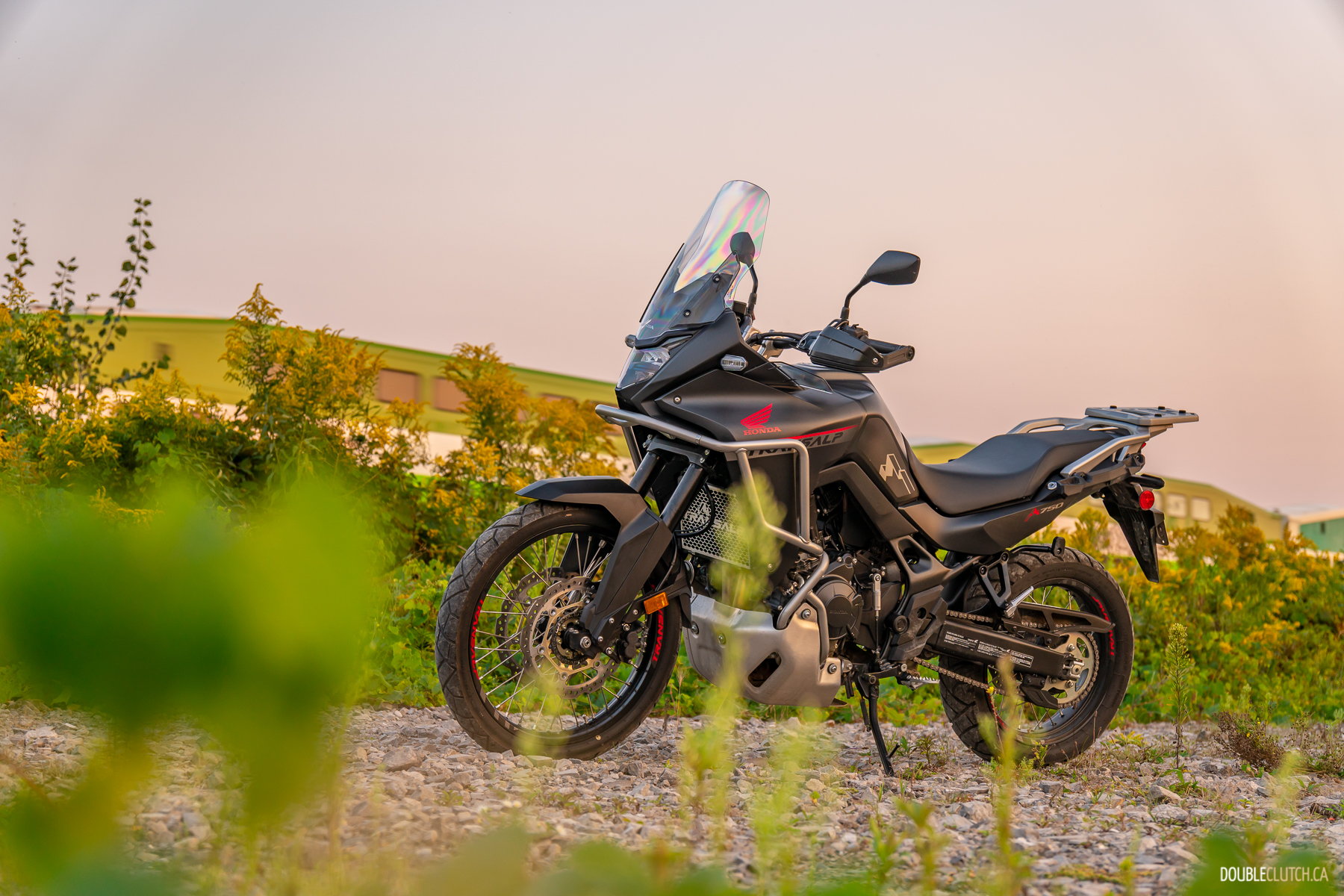
The Transalp name has been dormant for more than 10 years, leaving a glaring hole in Honda’s adventure lineup. It developed a reputation the world over for being a competent middleweight bike that had good road manners and could handle leaving the road without worry. It’s now back to carry on the mission, slotting in between the little NX500 and the big Africa Twin.
The new Transalp is powered by a new 755-cc engine, producing 83 horsepower at 9,500 rpm and 55 pound-feet of torque at 7,250 rpm. It’s a parallel-twin that makes use of Honda’s Unicam head design, using one camshaft and a clever rocker setup to actuate four valves per cylinder. This shaves weight, keeping the TransAlp at a very trim 459 pounds, and it shaves weight off the top of the engine—lowering the centre of gravity and helping it handle like a much smaller bike than it is.
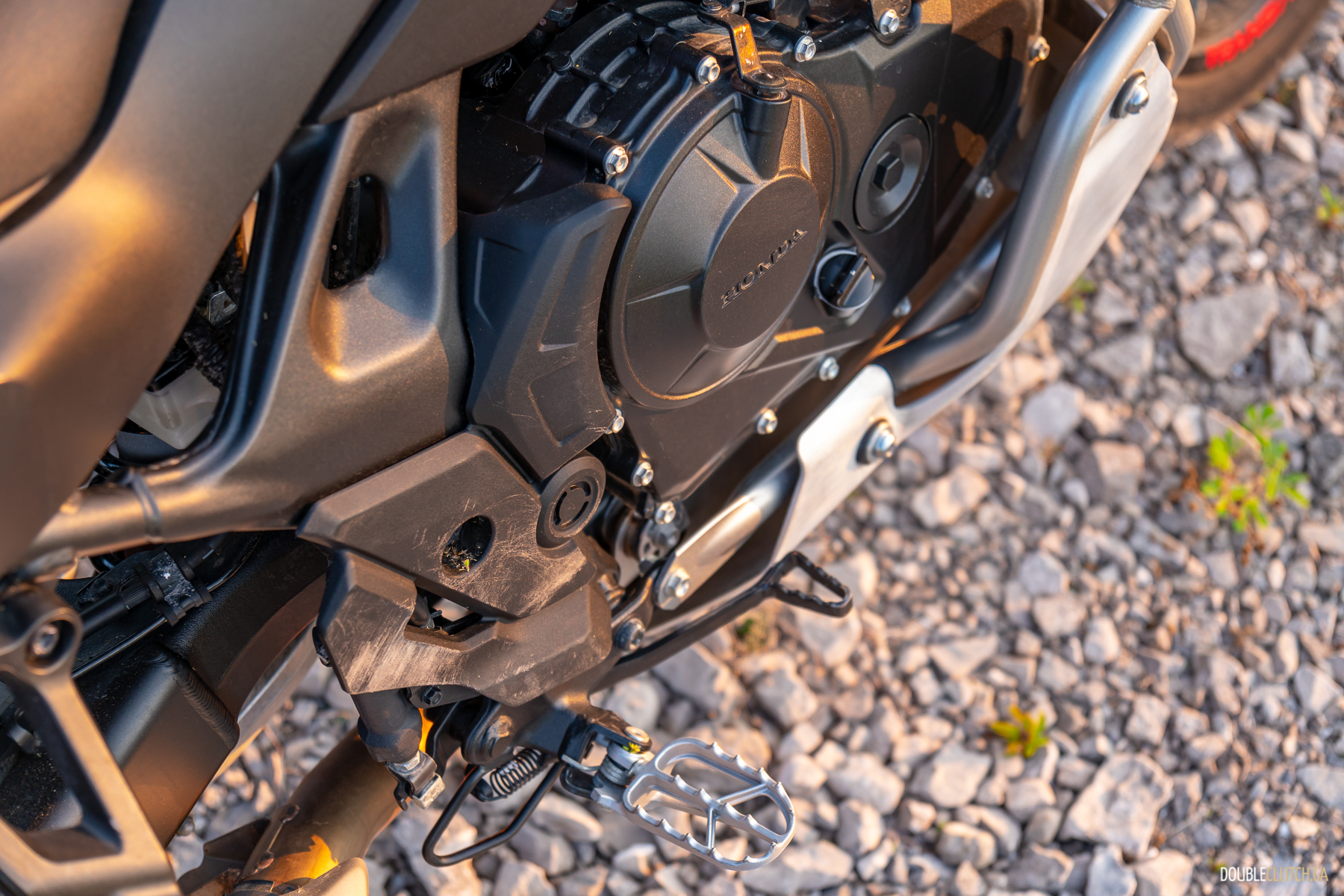
The Transalp is very friendly bike, with an upright riding position and a tall windscreen. This tester was fitted with an extra high windscreen and deflectors to further reduce wind turbulence, to a point where my unzipped jacket didn’t blow around at highway speeds. The engine is fairly quiet and smooth, with enough bottom end to make trundling through traffic or crawling up a trail a cinch. It’s not the fastest thing on Earth, but it has more than enough power to confidently merge, pass, and have fun. It sounds meaty when approaching its 10,000 rpm redline, too.
Honda’s selectable torque control is standard and works well, giving you either a rigid safety net or gentle guiding hand depending on which drive mode you’ve selected. The parameters of the different drive modes—ABS intervention, engine braking, power, and more—are clearly telegraphed on the five-inch TFT display, so you can immediately know what to expect in each mode, or have at it with the customizable user mode. The clutch has an exceptionally light action, its slipper function is very forgiving, and a two-way quickshifter is standard. The Transalp is a peach, no matter what you’re doing with it.

BMW basically invented the adventure bike category as we know it. The competition has become be pretty stiff, so they’ve done a lot to make their middleweight F900 GS more fierce than ever. The outgoing F850 engine has been worked over, now fitted with lighter forged internals and punched out to 895 cc. It makes 105 hp at 8,500 rpm and 63 lb-ft of torque at 6,750 rpm. The F900 is more than just sheer might; it went on a diet and lost 30 pounds compared to last year’s bike, coming in at 481 pounds.
Where the Transalp is fitted with everything Honda’s accessory catalog has to offer, covered in guards and bars and ready to be thrown off a cliff, this BMW goes hard in the other direction with smaller fairings and an exposed rear frame, painted for flair points. That’s not to say the BMW is stripped out; it has a longer standard feature list, has a bigger and slicker dash interface, has more optional niceties like cruise control, and of course, has more motor. Both look like they’re ready to go into battle, but carry themselves quite differently.
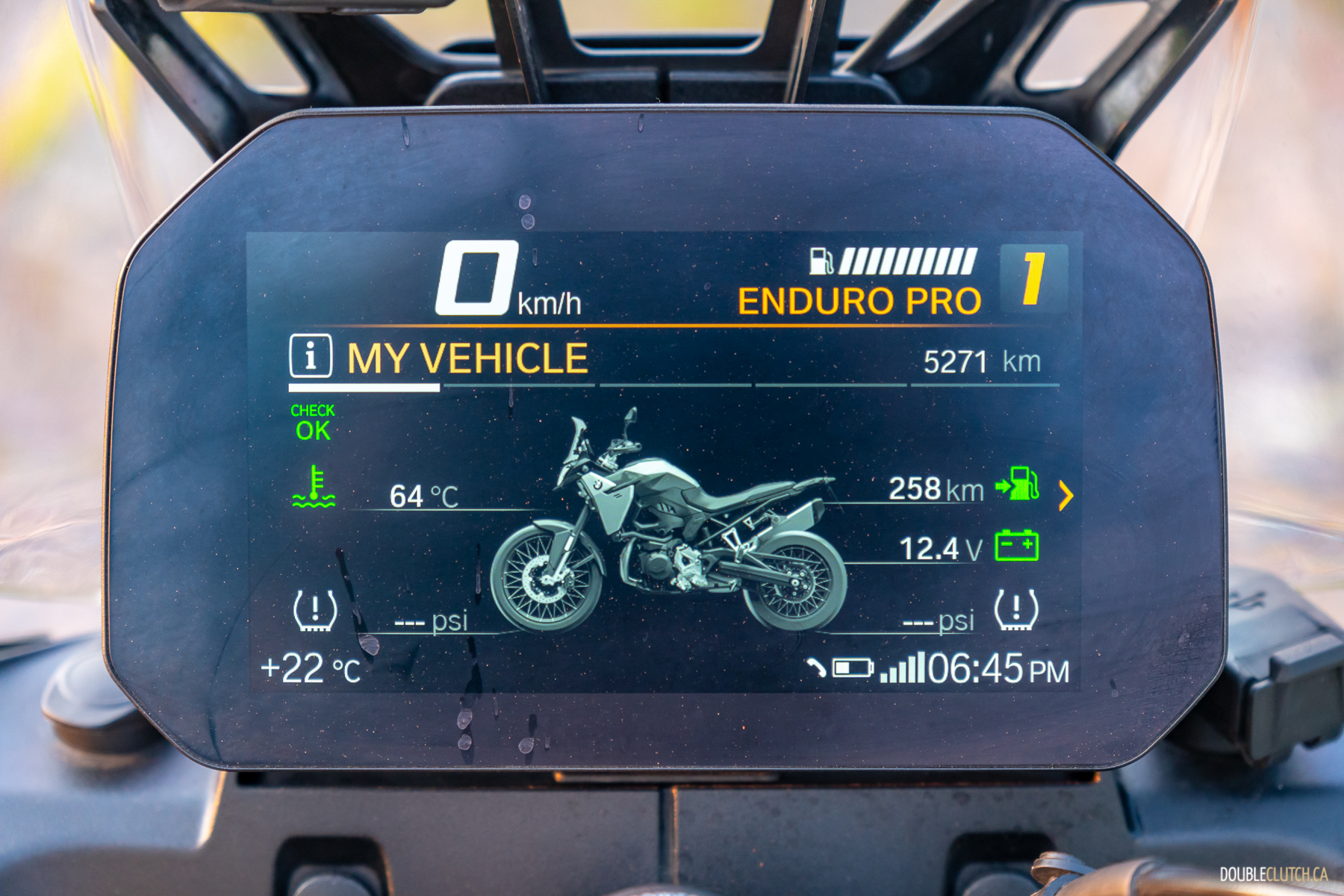
The F900 has a revised riding position with higher handlebars and lower footpegs, along with an easily adjustable gear lever to suit you exactly. Similarly, while both bikes have adjustable Showa inverted front forks, the BMW offers more adjustability and the ability to make that greater adjustment on the fly. Despite going out of its way to cater to your needs, the F900 is decidedly the more aggressive bike of the two.
The F900’s standard Akrapovic exhaust is louder, it has an angrier intake snarl, the riding position has you leaning forward in more of an attack position, the clutch is a little harder and more grabby, but it’s offset somewhat by an incredibly slick quickshifter—optional on this bike—and the raw merit of having more significantly more grunt everywhere. It rides a little harder and transmits quite a bit more vibration through the handlebars at speed, despite being fitted with a steering damper.
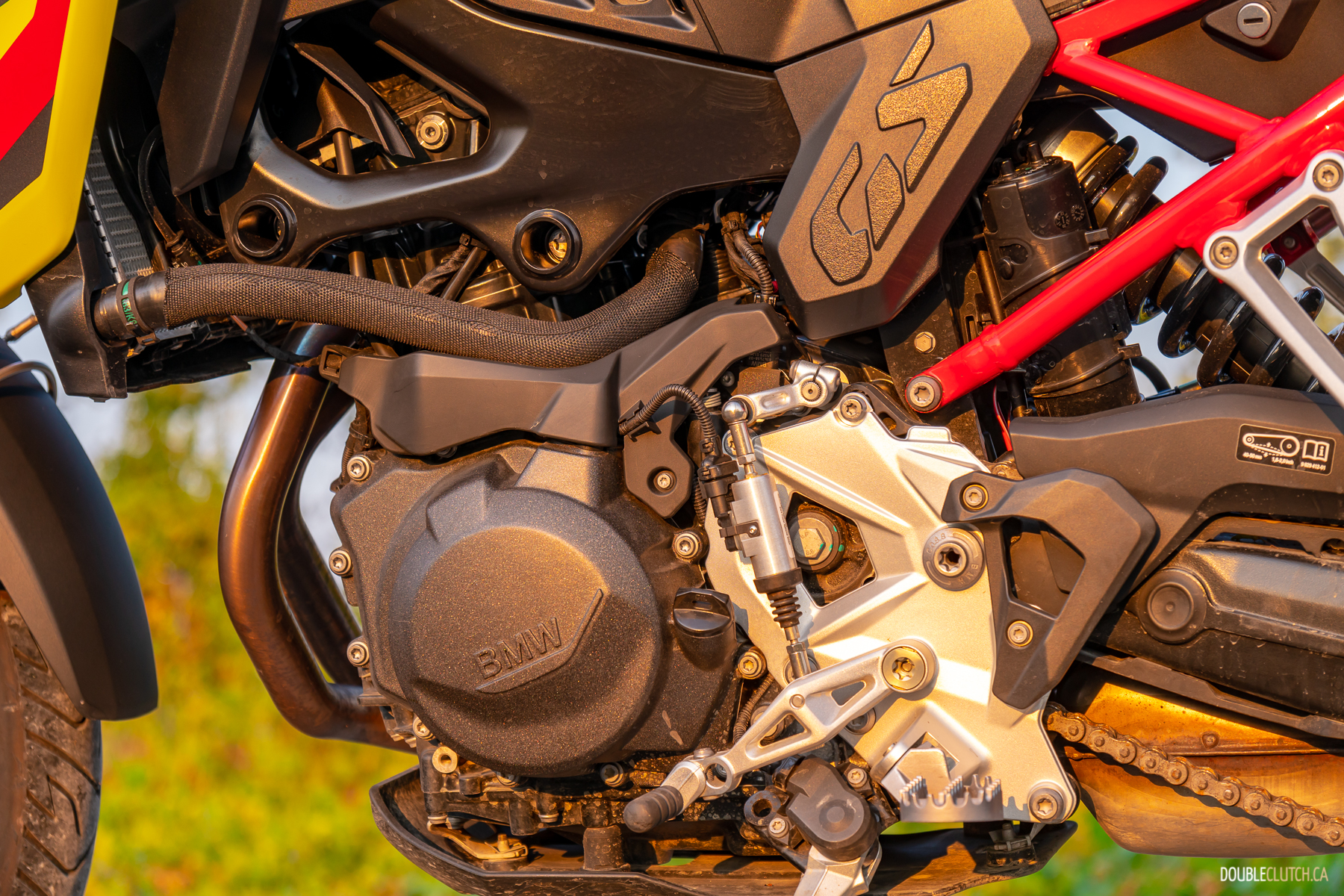
Despite having a slight weight penalty over the Transalp, the F900 GS carries its weight well and hides it. The F900 feels like it has a lower centre of gravity despite visibly sitting higher; it’s less inclined to lean and asks you to push harder into a corner, but it feels planted and eminently stable. This is really reassuring at the speeds this thing is capable of. The F900 GS is definitely an edgier machine than the Transalp, but it has good bedside manners and has your back just as well, with similar ride modes and a variable electronic safety net.
The general theme of friendlier-versus-edgier persists off-road too, but the Transalp and F900 GS aren’t nearly as far apart as they are on-road. Both are easy to fling through a trail, making short work of ruts and loose gravel. The Honda shrugs it all off a little more nonchalantly, doing a better job of shielding you from what’s going on, and its proclivity for manoeuvrability gives it an advantage with tighter situations.
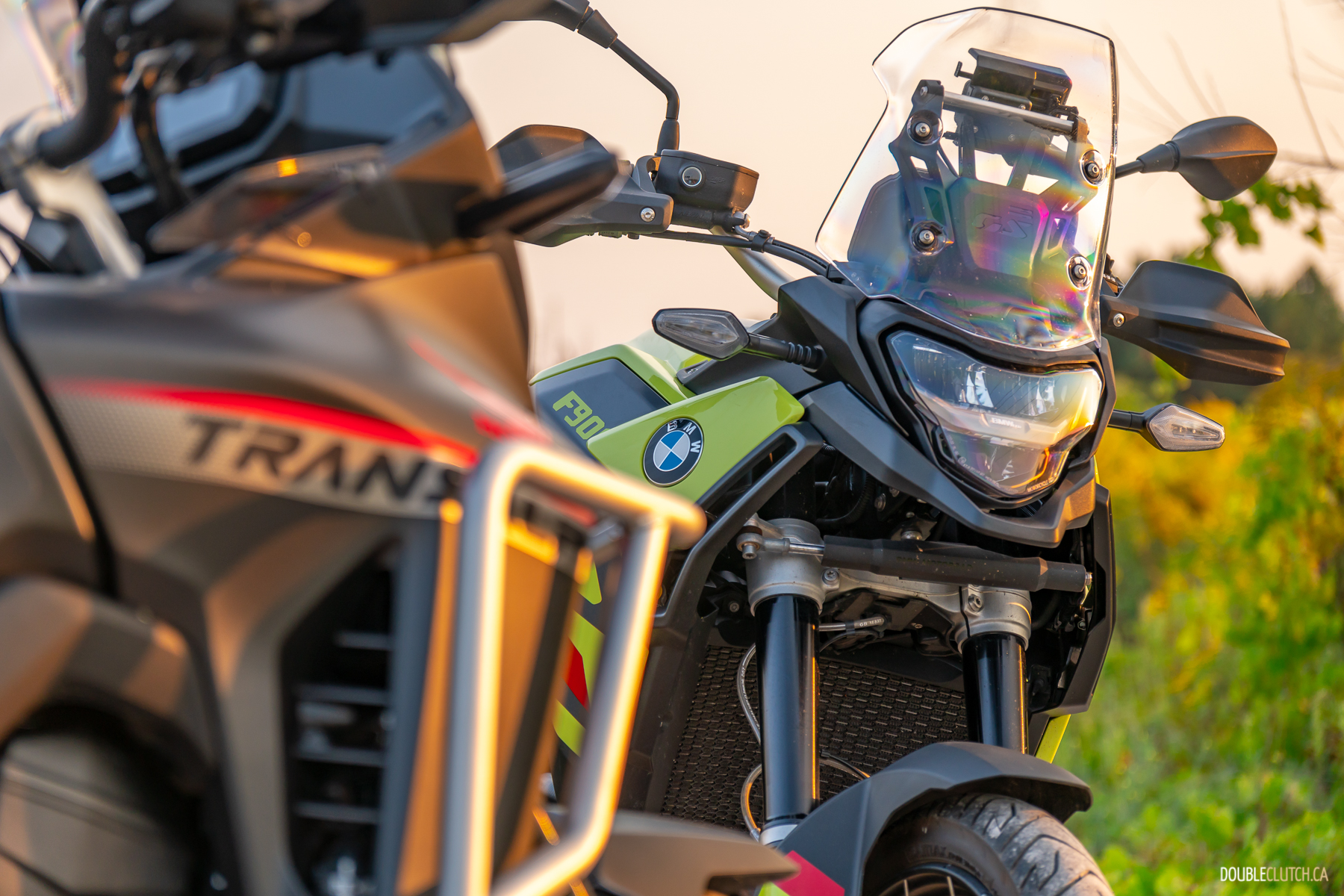
The BMW skitters around a little more, feeling maybe marginally less totally-impervious-to-terrain than the Honda. But in practice, the F900 GS is just as effective, and arguably has a higher pain tolerance with it’s extra inch or so of suspension travel. Both bikes’ engines are somewhat neutered in their respective Gravel/Enduro modes, so the BMW’s torque advantage isn’t as apparent as you’d think, but its traction control function is definitely more playful and deftly calibrated to feel like it’s not actively intervening. Regardless, both bikes are comfortably capable of far more than I am.
As for the question of which is the better bike … that’s real tricky, made all the more difficult by the price delta—or lack thereof—between the two bikes. The Transalp starts at $12,599, and with our tester carrying Honda’s entire accessory catalogue, rings up to $18,461 as-tested. The BMW F900 GS starts at $14,595, and with the rad paint scheme, cruise control, and Dynamic package that includes additional drive modes and quickshifters, rings up to $17,140 as-tested. It bears mentioning that the Honda includes a cargo box and panniers that I took off for these photos—losing those would take almost three grand off the sticker.

If we go Even Stevens and compare base for base, I think the BMW pretty well justifies its extra two grand. There’s more standard equipment, a lot more power, and a longer warranty, too. I found myself using the Honda to go to and from the office, but anytime I left the office during the day, for whatever reason or no reason at all other than the sake of it, I took the BMW.
Between the two, the 2024 Honda XL750 Transalp has a significant edge in overall refinement, comfort, and ease of use. Were I using this as a commuter or for regular long hauls, the Honda would be the no-brainer pick; it’s so much nicer to ride and easier to live with. But I would probably be thinking about the 2024 BMW F900 GS while I was riding it. It’s the one I wanted to ride more, because it was a little more engaging and exhilarating—to me anyway. Either way, you can’t go wrong with either of these; they’re both wonderful machines, and the question of which one is better really comes down to where your priorities lay.

